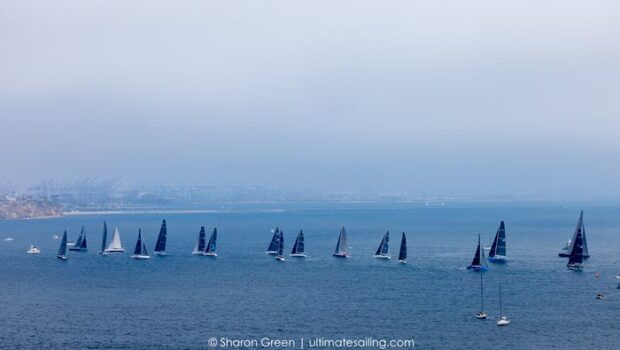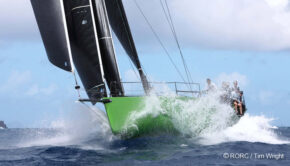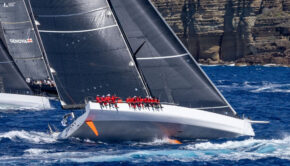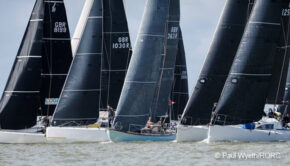Weather forecasts to aid Transpac 2025
Published on March 28th, 2024
For the the 53rd edition of the Transpac Yacht Race, a rating system for the 2225 nm course from Los Angeles to Honolulu will be based on weather predictions following an analysis of previous race data.
The 2025 race will employ Time-on-Time Forecast Time Correction Factor (F-TCF) ratings calculated from the polar performance data from each boat’s ORR certificate and weather predictions available on the morning of each start. Weather-adjusted ratings computed for each start day will seek to maximize the chances for all boats to compete fairly for overall honors.
With three start days staggered over five days, it is common for the competitors to deal with very different ‘Catalina Eddies’ as they work their way out of coastal waters. The plan is for F-TCFs created on start mornings to account for this variance before the boats get offshore and into the classic trade wind reaching and running conditions.
Stan Honey, who worked with the Transpacific Yacht Club Technical Committee Chair and US Sailing’s Head of Offshore Ratings Jim Teeters in the proposal for and development of the F-TCF scoring system, noted how the overlays of HRRR (High-Resolution Rapid Refresh) forecasts with fleet tracking and satellite imagery for previous races confirmed that the HRRR does a good job of forecasting the Catalina Eddy.
“Given the dramatic and varying effects that the Eddy has on the different Transpac starts, by using these forecasts, the F-TCF system can reduce the likelihood that the starters in an ‘unlucky day’ fall out of the running for fleet results the first day of the race,” explained Honey.
US Sailing’s Offshore Office will use Expedition routing software to predict each boat’s elapsed time according to the rating rule’s polar performance data, and the NOAA’s HRRR and GFS weather forecasts available shortly before the start. They calculate F-TCF from these predicted elapsed times. The same system will be used in the 2024 Newport-Bermuda Race.
“The development of F-TCF represents one of the most significant improvements in ratings in recent memory,” said TPYC Commodore Bill Guilfoyle. “With three starts spread over five days, few races stand to benefit more from this innovation than Transpac.”
Incorporating start-day F-TCFs—rather than relying on a historical weather matrix— means that “Good sailors on well-prepared boats have less chance of being unfairly punished by the luck of the draw on weather,” reports TPYC Vice Commodore Alan Andrews.
The TPYC Technical Committee’s analysis also included a review of the available handicap systems. Based on their recommendation, the TPYC Board of Directors voted to retain the ORR rating system as the best alternative for Transpac conditions.
TPYC leadership has long recognized the need for custom handicapping that accounts for the unique weather conditions of the Transpac course. These refinements are the latest in increasingly fine-tuned handicapping.
For each race day, Transpac will announce calculation details including the model times of the HRRR and GFS models that will be used to calculate the TCFs, the boundaries used between the HRRR and GFS, and the weather-routing settings used in Expedition.
Details: https://transpacyc.com/race-info/2025-race-info
Source: TPYC








 We’ll keep your information safe.
We’ll keep your information safe.